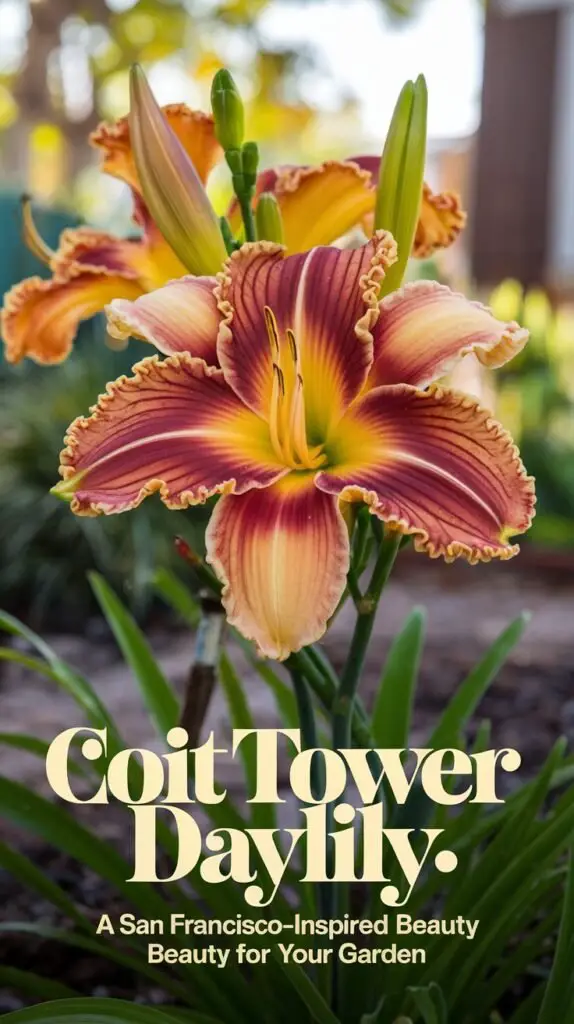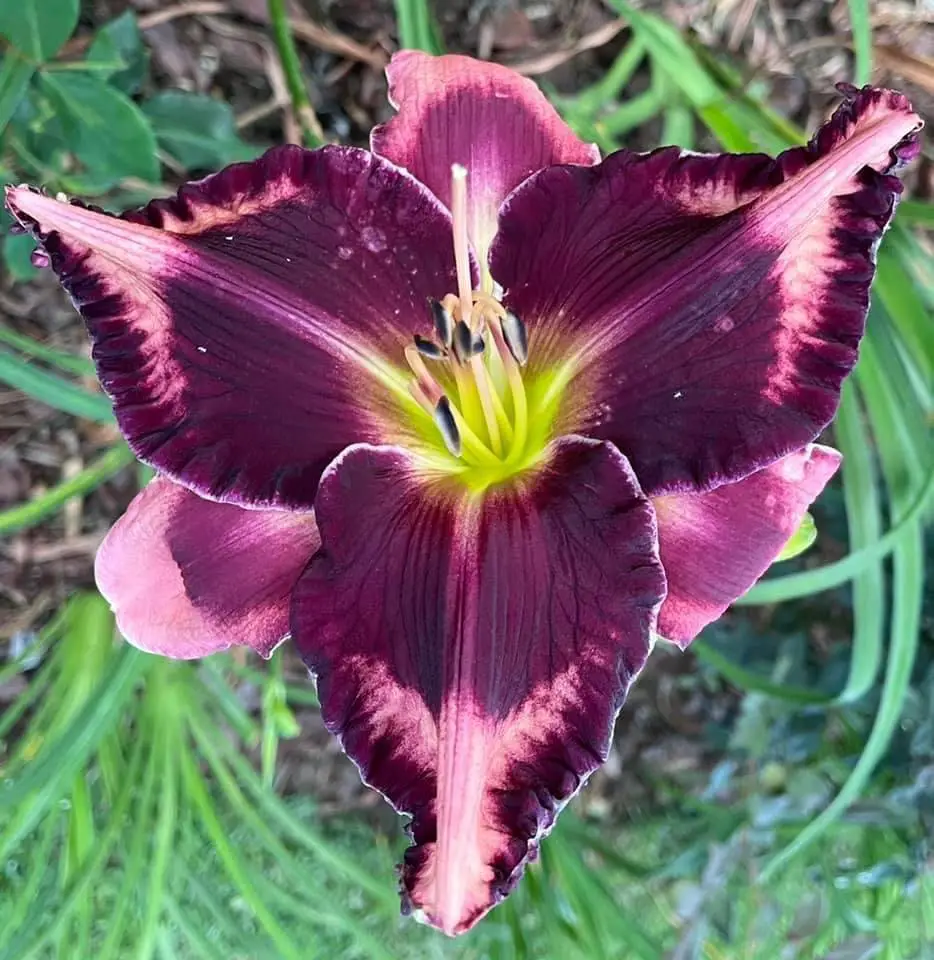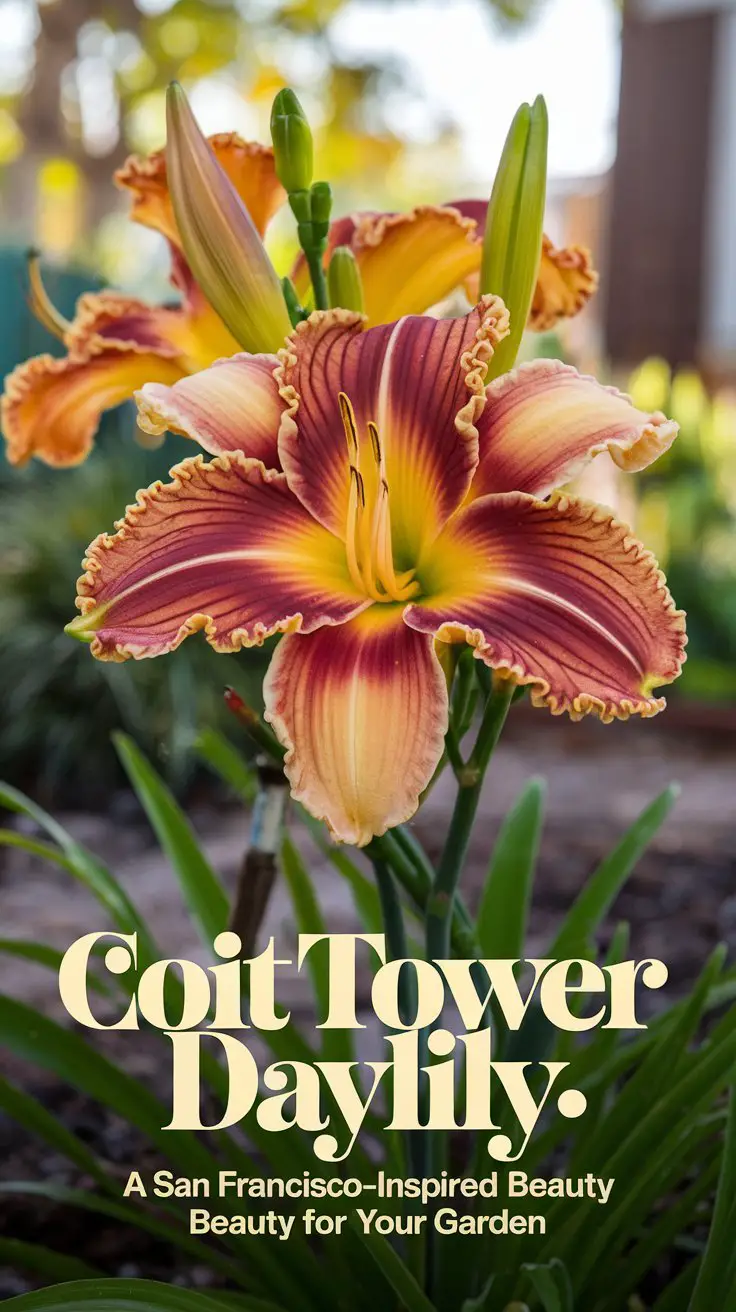Discover the Coit Tower daylily: a golden beauty inspired by San Francisco’s landmark. Learn to grow, care for, and landscape with this stunning perennial in our expert 2024 guide.
The Coit Tower daylily (Hemerocallis ‘Coit Tower’) is a stunning cultivar that brings a touch of San Francisco charm to gardens worldwide. Named after the iconic Coit Tower, this daylily variety boasts impressive blooms and robust growth, making it a favorite among both novice gardeners and experienced horticulturists. In this comprehensive guide, we’ll explore the characteristics, care requirements, and cultural significance of the Coit Tower daylily.

As a daylily hybridizer with over two decades of experience cultivating and studying these versatile perennials, I’m excited to share my insights on this San Francisco-inspired beauty. Let’s delve into the world of the Coit Tower daylily and discover why it’s capturing the hearts of flower enthusiasts across the globe.
What is the Coit Tower Daylily?

The Coit Tower daylily is a cultivar of Hemerocallis, a genus known for its hardy and adaptable nature. This particular variety was developed to honor San Francisco’s famous Coit Tower, mirroring its elegance and stature in floral form.
Key Characteristics:
- Height: Typically grows 24-30 inches tall
- Bloom Size: Large flowers, often 5-6 inches in diameter
- Color: Rich golden-yellow petals with a subtle orange throat
- Bloom Time: Mid-season, usually peaking in July
- Fragrance: Lightly scented
2024 Update: Recent breeding efforts have focused on enhancing the Coit Tower daylily’s reblooming capabilities, with new strains showing extended flowering periods.
The History Behind the Name
Named after the Coit Tower, a 210-foot Art Deco tower in San Francisco, this daylily variety pays homage to the city’s architectural heritage. The tower, built in 1933, was funded by Lillie Hitchcock Coit to beautify the city she loved.
2024 Insight: Urban gardening initiatives in San Francisco are increasingly incorporating the Coit Tower daylily in public spaces, creating living links to the city’s landmarks.
Growing Coit Tower Daylilies
Sun and Soil Requirements
Coit Tower daylilies thrive in:
- Full sun to partial shade
- Well-draining, fertile soil
- Slightly acidic to neutral pH (6.0-7.0)
Pro Tip: In hotter climates, providing afternoon shade can help maintain flower quality and extend blooming period.
Planting and Spacing
- Plant in spring or early fall
- Space plants 18-24 inches apart
- Plant at the same depth they were growing in their nursery containers
2024 Trend: Companion planting with native California plants is gaining popularity, enhancing garden biodiversity.
Watering and Fertilization
- Water deeply once a week, more in hot or dry periods
- Apply a balanced, slow-release fertilizer in early spring
- Avoid over-fertilization, which can lead to excessive foliage growth at the expense of blooms
2024 Innovation: Smart irrigation systems tailored for daylily cultivation are helping gardeners optimize water usage.
Maintenance and Care
- Deadhead spent blooms to encourage continued flowering
- Divide clumps every 3-4 years to maintain vigor
- Cut back foliage in late fall or early spring, depending on your climate
Pro Tip: Leave some seed pods to develop for potential hybridization experiments or to share with fellow gardeners.
Landscaping with Coit Tower Daylilies
The Coit Tower daylily’s striking appearance makes it versatile in various garden designs:
- As a focal point in perennial borders
- Massed for dramatic effect in dedicated daylily beds
- In container gardens for patios or balconies
- Along walkways or driveways for a welcoming display
2024 Trend: Incorporating Coit Tower daylilies in pollinator gardens is becoming increasingly popular, supporting local ecosystems.
Pests and Diseases
While generally hardy, Coit Tower daylilies can face challenges:
- Pests: Aphids, thrips, spider mites
- Diseases: Daylily rust, crown rot
2024 Update: New organic pest control methods specifically formulated for daylilies are showing promising results in maintaining plant health without harsh chemicals.
Propagation
Coit Tower daylilies can be propagated through:
- Division of mature clumps
- Seed collection and sowing (note that seedlings may not be identical to the parent plant)
Pro Tip: When dividing, ensure each section has at least 2-3 fans for best results.
The Coit Tower Daylily in Culture
Beyond its horticultural appeal, the Coit Tower daylily has found its way into local culture:
- Featured in San Francisco garden tours
- Used in floral arrangements celebrating the city’s heritage
- Incorporated into educational programs about native and adaptive plants
2024 Insight: Virtual reality garden tours featuring the Coit Tower daylily are gaining popularity, allowing global audiences to experience San Francisco’s horticultural treasures.
Bringing San Francisco Charm to Your Garden
The Coit Tower daylily offers more than just beautiful blooms; it brings a piece of San Francisco’s rich history and culture to gardens around the world. Whether you’re a seasoned daylily enthusiast or a novice gardener, this cultivar promises to add a touch of golden California sunshine to your landscape.
Remember, like the diverse neighborhoods of San Francisco, each garden is unique. Don’t be afraid to experiment with placement and companion plants to find the perfect spot for your Coit Tower daylilies to shine.
For more information on daylily cultivation and varieties, visit the American Daylily Society or your local botanical garden. Happy planting, and may your garden bloom with the spirit of San Francisco!
For more gardening tips and plant care guides, visit usagardenhub.com




